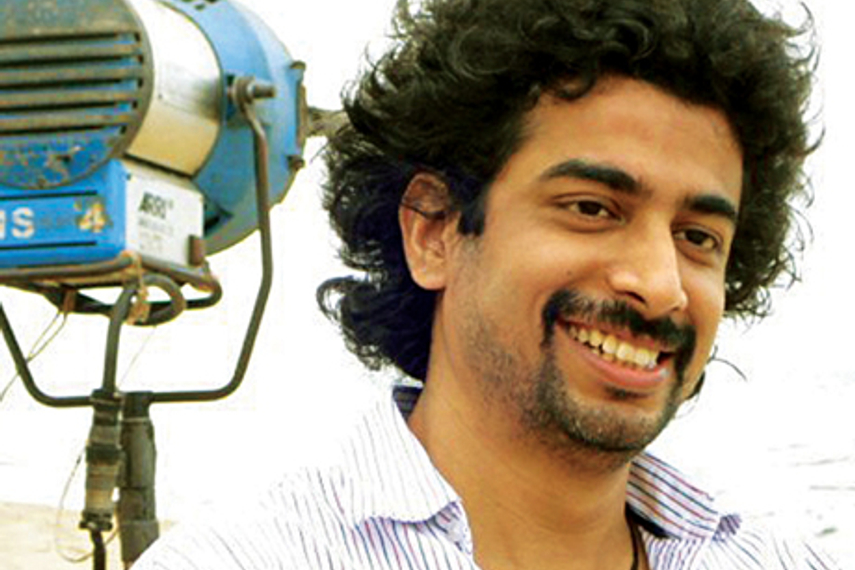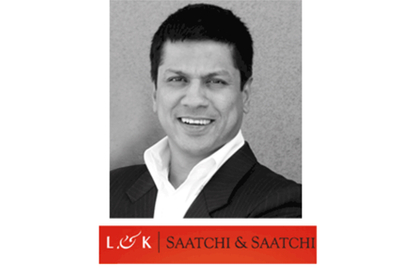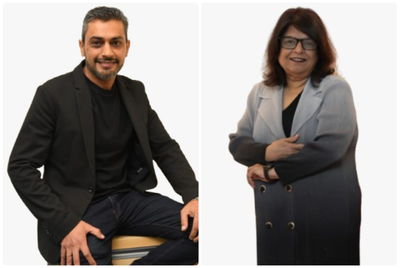A degree in journalism, a stint at Childline and time spent at Contract and Grey comprise the ‘formal’ training that Nangia received. He calls himself a 'newbie' until he joined Saatchi & Saatchi.
“I started working with Childline, which was a very different line of work. My first brush with advertising, so to speak, was in servicing which was about nine months with Contract Advertising. I was also at a company called DMA Branding for three and a half years where I got into design. This is where I had started to interact with communication agencies. At DMA Branding, I pretty much got to work in every department from planning to servicing to production which opened me up to all aspects of communication.”
Nangia made the move to Grey Bangalore in 2004 after almost a year-long stint at Contract. “Although here I was in planning, I had also started writing. I could write in Hindi. ITC was one of my biggest clients then. In any case, my background was in journalism so I figured that I could give writing a shot, which is when the bug really bit me. We worked on ITC and Britannia there. It was fun and that’s what I wanted to do, at least in the medium term. I joined Saatchi & Saatchi after Grey Bangalore which meant a bit of a demotion but I was fine with that. I was getting to do what I wanted to do at the time.”
Grey had a small team and a friendly work environment, he remembers. “Grey Bangalore was a small operation. It was a very small tight team where everybody did everything. It was like working with friends. Saatchi was a lot bigger place which came with its own structure. It was a bit of a shock to begin with because it required you to fit into that structure.”
“At Grey, because of the size of the team, we were a lot more ‘militant’ in our approach to work. We were less formatted, we behaved too much like an upstart. It had big clients though. Saatchi was different, which brought great learning. I learnt a lot from Juju Basu, especially in terms of being a creative director and how to get work out of people, how to be collaborative but also have a point of view, in terms of the craft itself, collaboration within the agency and then the network,” he states.
Learning the craft of the job is what he did at Saatchi & Saatchi. “Everybody can write or thinks they can write but getting into the craft of it is what I learnt at Saatchi. I spent about two years there. And this was after being a ‘newbie’ after seven years of working.”
He fondly remembers the campaigns he worked on at Saatchi & Saatchi: “We worked on Sony Pix, AXN, Novartis, Cox & Kings. Cox & Kings was shortlisted at One Show. We had spent about three months creating it. It was quite a delight to work on.”
‘Work with the client’
Nangia holds a slightly different view of the agency-client relationship. In his opinion, the relationship has only strengthened.
“You need to learn how to work with the client. I’ve never really understood the antagonistic position about clients -- that they are against good work that they actually want to bring you down and only have you do functional advertising. You realise that not every time are you creating a piece of art and also that you do your best work when you’re working along with the client and not at counter purposes with them. This relationship will actually get more out of projects than the agency or the client had expected. Even the toughest of clients, if they believe that your purpose is pretty much the same as theirs, then they will let you do your bit and support you. This doesn’t mean giving in or giving anything up. We’ve all had our share of difficult clients but very few who are unreasonable.”
The digital age
The creative also voices his views on digital, which according to him, is letting adland have some fun and indulge, which is good for storytelling. "A couple of years ago it would’ve mattered about having a preference of TVC or a digital-only film. Today, it doesn’t. The satisfaction of seeing one or two million views on YouTube gives you a perspective about how many people have actually seen your work as opposed to putting your work on television where you never find out," he offers.
Nangia is far from writing TV off completely. He explains that the industry has diverted its attention towards digital, which is understandable.
“I’m not saying that it isn’t fun creating for TV but somewhere the medium preference is somewhat becoming irrelevant. It depends on who you are targeting. There’s no point targeting a 40-year-old housewife on the digital medium. Similarly, there’s no point targeting a 19-year-old on TV. We need to really look at who we want to talk to. TV is not going anywhere in a hurry because there is a very large population that is still watching it. But there’s also a large set that is not watching TV and have turned to the internet,” he elaborates.
While that's the reality, on the other hand digital, for the industry, is far too new to fully understand how to use the medium optimally, he notes.
"We’re not sure about what it takes to get people’s attention online which, in fact, is fine since we’re just starting to explore the digital medium. Many of us, especially, those who have been involved with traditional media, try to apply the same rules here in terms of trying to tell the similar stories in similar formats and trying to exploit the fact that digital allows us more duration to play with. Are there other aspects to explore? For sure. Are there more levels of interactivity that need to be explored? For sure. We’re not there yet, by any yardstick," adds Nangia.
He recommends that the industry needs to open itself up to interacting with younger people within the industry and outside. Only then will it be able to figure out what to do with the medium, he observes.
The feedback mechanism
The true test of a piece of work is when it’s out in the market. There is nothing anyone can do to ensure a certain kind of reception for the work. This opens up creators to feedback – which is both a motivator and sometimes a dampener of spirits, according to the adlander.
“It depends where the feedback is coming from. The industry for itself is not very kind. We don’t support each other; it is fine to criticise work but we often criticise the people behind the work," he notes.
Nangia is not against critique. He explains, “It is fine to be unforgiving if that is what the work deserves. But at least over the last four or five years it feels like as an industry we don’t respect each other much anymore. Somehow we don’t believe in supporting each other, we’ve begun judging the people behind the work.”
This kind of environment may be a result of a combination of varied reasons, as the creative points out.
He expands, “Advertising is not as well-paying from the client’s end as it used to be in proportion of your efforts. Which in turn means people are not being paid as much, which means there is more and more insecurity between people. The mediums are evolving so fast that many of us are becoming older pretty quickly in terms of being able to adapt. We’ve started deflecting that on each other rather than working together to evolve and prop each other up. Overall, we’re moving away from focusing on the craft. We’ve grown up looking up at the stalwarts of the nineties. For them, their craft took precedence over everything else. Somehow, today people don’t focus on those things that have led us to the current scenario. As an industry, we need to be building our skill sets rather than living with those insecurities. A big barometer of that is how production houses, artists view us. The lack of respect for an agency person in those circles is actually appalling. We need to try and build our own skills and build respect for ourselves.”
But feedback from consumers is always necessary and good, acknowledges Nangia.




.jpg&h=334&w=500&q=100&v=20250320&c=1)
.jpg&h=334&w=500&q=100&v=20250320&c=1)


.jpg&h=334&w=500&q=100&v=20250320&c=1)
.jpg&h=334&w=500&q=100&v=20250320&c=1)



.jpg&h=334&w=500&q=100&v=20250320&c=1)




.jpg&h=268&w=401&q=100&v=20250320&c=1)


.jpg&h=268&w=401&q=100&v=20250320&c=1)
